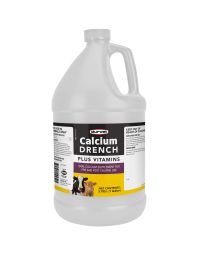What is cattle drench?
Cattle drench is a method of administering liquid medications or supplements to cattle by oral route, typically through a tube that is inserted into the animal's mouth and down the esophagus. This method is often used to treat or prevent internal parasites, such as worms, or to provide nutritional supplements to cattle that are unable to eat or drink due to illness or injury. The liquid medication is usually delivered directly into the animal's stomach through a tube passed through the animal's mouth and down the esophagus. The tube is usually inserted through the animal's mouth, then passed through the esophagus and into the stomach. Cattle drenching is a common practice in livestock farming and is often done by farmers or animal health professionals. It is important to follow proper technique to avoid injuring the animal or administering the wrong dosage. Additionally, it is important to use the appropriate equipment, such as a drenching gun, to ensure accurate dosing and avoid spills.
What types of medications are adminstered via drench?
There are several types of medications that can be administered to cattle using the drenching method, including:
- Anthelmintics: These are medications used to treat and prevent internal parasites, such as worms, in cattle. Examples include Ivermectin, Fenbendazole, and Albendazole.
- Nutritional Supplements: These are used to provide cattle with essential nutrients, such as minerals and vitamins, when they are unable to eat or drink due to illness or injury. Examples include electrolytes, vitamins, and minerals.
- Antibiotics: These are used to treat bacterial infections in cattle, such as respiratory infections, metritis, and mastitis. Examples include Penicillin, Tetracycline, and Sulfonamides.
- Anti-inflammatory: These medications are used to reduce inflammation and pain in cattle. Examples include Flunixin meglumine.
It is important to note that the use of these medications should be under the guidance of a veterinarian and must follow the specific guidelines and protocols for administering medications and fluids to livestock. The veterinarian will also take into consideration the species and size of the animal, the type of pain and the duration of the pain, as well as any other relevant factors before deciding on the most appropriate treatment option. Additionally, the use of antibiotics should be done in a responsible and controlled way to avoid the development of antibiotic resistance.
Cattle Drenching Process
- Restraint of the animal: The animal should be restrained in a chute or head gate to prevent movement during the drenching process.
- Preparation of the drench: The drench solution should be prepared according to the manufacturer's instructions and should be at the correct temperature.
- Positioning of the animal: The animal's head should be positioned in such a way that the drenching tube can be inserted into the animal's mouth and down the esophagus.
- Insertion of the tube: The tube should be inserted into the animal's mouth and passed down the esophagus and into the stomach. Care should be taken to ensure that the tube is inserted correctly and to avoid injury to the animal.
- Administration of the drench: The drench solution should be administered slowly and carefully to ensure that the animal can swallow it easily.
- Monitoring the animal: The animal should be monitored for any adverse reactions or complications following the drenching procedure.
What is a drenching device?
A cattle drench device is a piece of equipment used to administer liquid medications or supplements to cattle by oral route. It typically consists of a tube that is inserted into the animal's mouth and down the esophagus, and a mechanism for delivering the liquid medication or supplement into the animal's stomach. There are several different types of cattle drench devices available, including:
- Drench guns: These devices consist of a tube attached to a squeeze handle or trigger mechanism that allows the user to control the flow of the liquid medication or supplement.
- Automatic drenching machines: These devices consist of a tube attached to a motor-driven pump that automatically delivers the liquid medication or supplement at a set rate.
- Drenching syringes: These devices consist of a tube attached to a manual syringe that allows the user to control the flow of the liquid medication or supplement.

![Drench Applicator [400 mL]](https://www.armoranimalhealth.com/media/catalog/product/cache/e62b29cbfd1c8a243018c6ffc350ffcf/d/r/drench_applicator_400_ml__1.jpg)

![Labelvage Drench Applicator (Green) [200ml]](https://www.armoranimalhealth.com/media/catalog/product/cache/e62b29cbfd1c8a243018c6ffc350ffcf/l/a/labelvage_drench_applicator_green_200ml_.jpg)
![Keto Nia Drench [Gallon]](https://www.armoranimalhealth.com/media/catalog/product/cache/e62b29cbfd1c8a243018c6ffc350ffcf/k/e/keto_nia_drench_gallon_.jpg)